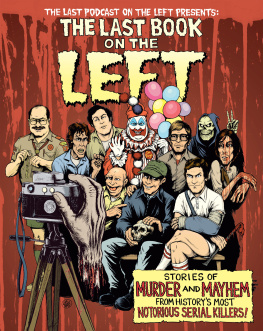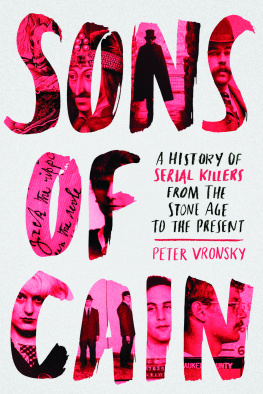


Copyright 2021 by Meg Hafdahl & Kelly Florence
All rights reserved. No part of this book may be reproduced in any manner without the express written consent of the publisher, except in the case of brief excerpts in critical reviews or articles. All inquiries should be addressed to Skyhorse Publishing, 307 West 36th Street, 11th Floor, New York, NY 10018.
Skyhorse Publishing books may be purchased in bulk at special discounts for sales promotion, corporate gifts, fund-raising, or educational purposes. Special editions can also be created to specifications. For details, contact the Special Sales Department, Skyhorse Publishing, 307 West 36th Street, 11th Floor, New York, NY 10018 or .
Skyhorse and Skyhorse Publishing are registered trademarks of Skyhorse Publishing, Inc., a Delaware corporation.
Visit our website at www.skyhorsepublishing.com.
10 9 8 7 6 5 4 3 2 1
Library of Congress Cataloging-in-Publication Data is available on file.
Cover design by David Ter-Avanesyan
Cover photos: DNA by Shuttershock; hand by Getty Images
Print ISBN: 978-1-5107-6414-9
Ebook ISBN: 978-1-5107-6415-6
Printed in the United States of America
We dedicate this book to the victims, known and unknown, and to their families and friends.
INTRODUCTION
Killers exist in every aspect of our collective experience. Fictional ones loom in the films we watch and the books we read. Real ones strike in our own hometowns. There is a profound moment in our lives when we come to realize that the Freddy Krueger of our nightmares pales in vicious comparison to the serial killers in the newspapers. Within these pages we explore that fractious line that wavers between fiction and reality. Hollywood and true crime have long been bedfellows, and through the lens of science we can come to further understand the murderers who have darkened history and the films they have inspired.
This book is filled with dark deeds; many real, and others pure fiction. Tread cautiously, as this hazy border may trip you up.
As always, our love for horror in all its iterations lies within. We dont love the true killers, but we sure do love when brave victims, families, and members of law enforcement are honored. Often, film gives way to better stories in which the final girl slays the monster, and for that we are grateful. Let the monsters be forgotten as we rise.
SECTION ONE
CRIMES OF THE PAST
CHAPTER ONE
The Legend of Lizzie Borden (Lizzie Borden)
I (Meg) grew up in the eighties and nineties, overstuffed with a diet of iconic horror villains. Freddy, Jason, and even the menacing eyebrows of Vincent Price led me down the familiar landscape of twentieth century horror. I was only eight, snuggled in a hotel bed with my mother, when I discovered that women, too, had the power and nuance to be the foreboding presence in a shadowed room. While we watched a rerun of The Legend of Lizzie Borden (1975), a TV movie starring Elizabeth Montgomery from Bewitched (19641972), my mom divulged that the events unfolding were actually based on fact! The hazy images of Freddy Krueger and his vicious film brothers left my mind. The tropes I had already come to know, of women screaming in terror as they fled a maniac, had fallen at my feet. I was exalted by the thought that a woman, a real woman, in her fancy dress and with her flowery words, could succumb to the murderous, black heart within.
After filming The Legend of Lizzie Borden, Elizabeth Montgomery came to find out that she was related to Lizzie Borden! Sixth cousins, once removed.
While today The Legend of Lizzie Borden may not be the most famous of Borden biopics, it was popular upon its release. Montgomery was nominated for an Emmy, and writer William Bast received the Edgar Award for a television film script. For many in the 1970s, it had been their first introduction to the history and evidence of the trial, rather than the sing-song rhyme made so popular:
Lizzie Borden took an axe,
And gave her mother forty whacks;
When she saw what she had done,
She gave her father forty-one!
Since the TV movie, there have been quite a few adaptations of Lizzie and her infamous axe. These include the Lifetime TV film starring Christina Ricci, Lizzie Borden Took an Axe (2014), as well as Lizzie (2018), in which Lizzie (Chloe Sevigny) and her family maid Bridget Sullivan (Kristen Stewart) have a steamy love affair. This lesbian plot point also appears in Lizzie: The Musical (2009). While there is no evidence to prove that Lizzie and Bridget were lovers, Lizzie Borden was a known lesbian in her small community of Fall River, Massachusetts. Thus, the possibility of a relationship has been a suspected motive for many.
After watching Elizabeth Montgomery inhabit the curious skin of mysterious Lizzie, I fast became a Borden enthusiast. That next Halloween I carried a cardboard axe and wore a white, chiffon gown marred with fake blood. While other little girls devoted themselves to boy bands, I consumed every book, TV special, and hint of Lizzie. In my mid-thirties I am still finding new books and theories to slake my thirst for all things Lizzie.
In the film versions of what occurred in the Borden house on August 4, 1892, there is a surprising amount of accuracy. It is first important to note that, by the FBIs definition, serial killers must have killed multiple victims in multiple incidents. Therefore, Borden is technically not a serial killer. Whether she is guilty or not, she was only accused of two murders in a single incident (though we find her formidable enough to join the serial killers of this book). Bordens father, Andrew, and stepmother, Abby, were attacked with fury, both killed by numerous whacks with an
If Borden had slipped prussic acid into the family dinner, her parents wouldve salivated excessively, staggered, convulsed, and lost their ability to breathe in a matter of moments. Better or worse than an axe attack?
Poison has long been considered a womans tool for murder. There are many known female serial killers who relied on this silent weapon, like Nannie Doss who poisoned eleven people, and Nurse Jane Toppan (
The fact that Borden sought out prussic acid the day before the murders has long been used as evidence of her guilt. Prussic acid, also known as hydrogen cyanide, is a colorless and flammable liquid that is highly poisonous. It can be derived from pits of fruit such as apricots or cherries. In the television series Ozark (2017) Darlene Snell (Lisa Emery) admits to her dying husband Jacob (Peter Mullan) that she ground up cherry pits to create cyanide to poison his coffee. Would Borden have bothered to ask for prussic acid if she knew it would create evidence against her?
The testimony of Eli Bence, coupled with the known fact that Andrew, Abby, and Bordens sister Emma fell ill with a mysterious gastrointestinal upset the week prior to the axe murders, led many to believe that the axe murders occurred only after Borden attempted other deadly avenues. Another accurate piece of the aftermath presented in The Legend of Lizzie Borden is that the corpses of Andrew and Abby were left in the dining room of the home, rather than carted away by the county coroner, which we have become used to in the subsequent hundred years.
Next page
















